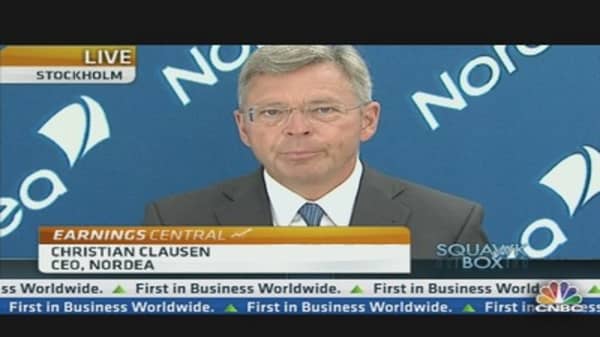The biggest bank in the Nordic region has warned that demand remains weak and competition for deposits remains intense, even as some of the risks from the euro zone debt crisis have subsided.
Speaking to CNBC on Wednesday, Nordea Bank's Chief Executive Officer Christian Clausen said confidence was not very high and businesses were holding back on spending and investment.
"Short-term working capital requirements are going down because orders are low and demand is not picking up," Clausen told CNBC Europe's "Squawk Box".
The Nordic region, made up of Sweden, Finland, Norway, Denmark and a few other countries in northern Europe, has so far avoided the worst of the slowdown in Europe. But there are growing signs that the pain is spreading.
On Wednesday, the composite purchasing manager's index (PMI) for the euro zone as a whole declined to 45.8, signaling a contraction.
Nordea Bank reported third-quarter operating earnings of 922 million euros ($1.2 billion) on Wednesday, a drop of 16 percent on the quarter and well below 995 million euros forecast in a Reuters poll.
Shares of the lender fell 3.6 percent.
Nordea's CEO said that some of the tail-risks had improved in recent months after the European Central Bank (ECB) announced an unlimited bond-buying program.
He also said that the bank's credit quality had improved, with the number of businesses unable to pay back loans going down.
But he said the company had increased its general provisions for bad loans to protect from a worsening of the business cycle and he suggested such provisions could rise further.
"We have to remember that in Nordea the provisioning levels are in general very low, we are very close to the average over a full cycle...so the level is not very high based on where we are in the cycle."
Clausen also said margins on deposits were close to zero given the low interest rate environment and the competition between banks for depositors.
However, he said the bank had been able to cut costs as more clients moved to online banking. He said 1.4 million customers had downloaded the bank's mobile application and that would allow the lender to decrease costs even further.




